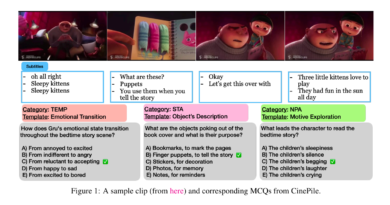Google DeepMind Releases Penzai: A JAX Library for Building, Editing, and Visualizing Neural Networks
Google DeepMind, one of the leading organizations in the field of artificial intelligence (AI) and deep learning, has recently unveiled its latest research toolkit called Penzai. This JAX library aims to revolutionize the way researchers build, edit, and visualize neural networks. With Penzai, developers and researchers can now have a powerful and user-friendly tool that simplifies the process of AI research.
An Overview of Penzai
Characterized by its transparent and functional approach, Penzai offers researchers a unique way to view and modify neural networks. The library enables users to visualize and edit models as legible pytree data structures, providing a clearer understanding of the inner workings of a model. This feature is particularly beneficial when working with trained models, as it allows researchers to gain insights into their behavior and make necessary adjustments for specific use cases.
Accessibility is a significant focus of Penzai, as it aims to make AI research more approachable for all researchers. By simplifying the process of modifying pre-trained neural networks, Penzai opens doors to a wider range of experimentation and innovation on existing AI technologies. This inclusivity is vital for driving advancements in the field and discovering new AI applications altogether.
Key Features of Penzai
Penzai offers a wide array of modular tools that can be used independently or combined to enhance AI research. Here are some notable features of this groundbreaking JAX library:
1. penzai.nn (pz.nn)
One of the standout modules of Penzai is penzai.nn (pz.nn), which provides a unique combinatorial approach to neural network libraries. This approach sets it apart from traditional frameworks like Keras or Haiku. The pz.nn module allows users to access the complete structure of a model’s forward pass, enabling them to examine every detail and make logical adjustments on-the-fly. This feature makes Penzai particularly powerful for developers who seek precision and flexibility in their neural network models.
2. penzai.treescope (pz.ts)
Another crucial feature of Penzai is penzai.treescope (pz.ts), which enhances the visualization of models and data structures. This Python pretty-printer replaces the standard IPython/Colab renderer and provides detailed insights into the JAX Pytrees structure. It enables the visualization of arrays with multiple dimensions, making it easier to understand complex data structures.
3. penzai.core.selectors (pz.select)
Penzai’s pz.select module, also known as penzai.core.selectors, is a powerful tool for modifying and patching pytrees. It offers advanced capabilities that go beyond simple setting adjustments, allowing researchers to make complex modifications when needed. This module contributes to the flexibility and adaptability of Penzai, providing researchers with a high level of control over their neural network models.
4. penzai.core.named_axes (pz.nx)
The penzai.core.named_axes module, or penzai.core.named_axes (pz.nx), introduces a named axis system that simplifies the switch between named and positional programming styles. This feature enhances the user experience by eliminating the need to learn a new API. With pz.nx, researchers can seamlessly switch between different programming styles, depending on their preferences and requirements.
5. penzai.data_effects (pz.de)
Penzai also includes the penzai.data_effects module (pz.de), which provides a flexible system for managing side arguments, random numbers, and state variables through pytree traversal. This feature puts users in control and enhances their ability to manipulate and fine-tune AI models according to their specific needs.
Installation and Usage
To start using Penzai, one must import the necessary libraries and modules. The integration with Google Colab and the JAX ecosystem ensures a seamless experience for researchers working in the JAX environment. With Penzai, visualizing and editing neural network models becomes significantly easier, and custom logic can be injected anywhere, enabling developers to gain a deeper understanding of their models and make informed modifications.
To explore the full potential of Penzai and its various modules, researchers are encouraged to check out the official GitHub repository. The repository provides extensive documentation and examples to assist users in getting started with this powerful JAX library.
Conclusion
With the release of Penzai, Google DeepMind has demonstrated its commitment to pushing the boundaries of AI research. This JAX library offers researchers unparalleled transparency and functionality when building, editing, and visualizing neural networks. By providing a user-friendly interface and a comprehensive set of modular tools, Penzai makes AI research more accessible and paves the way for innovation and exploration in the field of artificial intelligence.
Researchers and developers alike can leverage the power of Penzai to gain deeper insights into their models and make precise adjustments as needed. Whether it’s examining the forward pass structure, visualizing complex data structures, or managing side arguments and state variables, Penzai empowers AI researchers to achieve their goals more efficiently and effectively.
As AI research continues to advance, tools like Penzai play a vital role in enabling developers to iterate, experiment, and create more intelligent and powerful neural network models. With its powerful features and easy integration with existing frameworks, Penzai is poised to become an indispensable resource for researchers in the AI community and beyond.
Check out the GitHub. All credit for this research goes to the researchers of this project. Also, don’t forget to follow us on LinkedIn. Do join our active AI community on Discord.
If you like our work, you will love our Newsletter 📰




